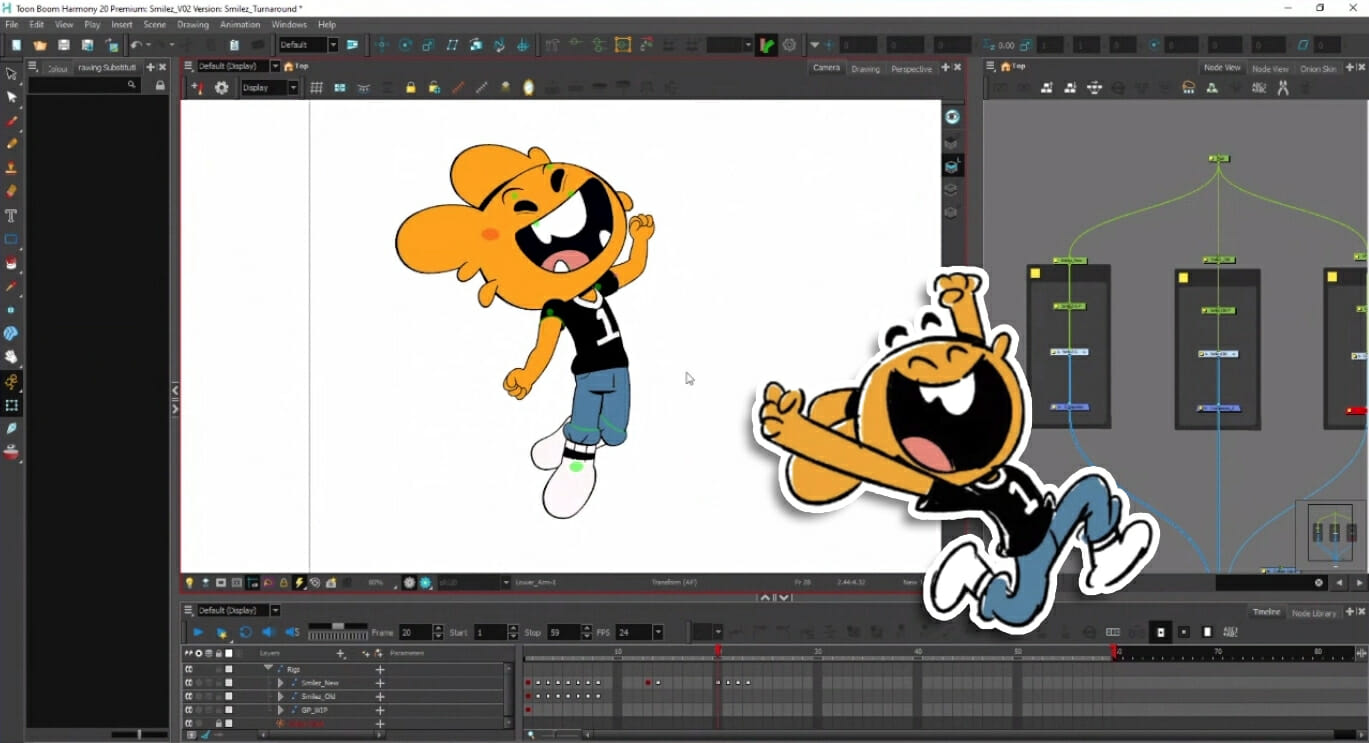

I have been trying a different method to achieve the panning effect mentioned earlier. But I just figured that for other readers, this was a good opportunity to discuss pegs as they apply to tweening. To do this I believe that you need to understand the relationships between pegs and the keyframed parameters assigned to those pegs and the way to control when and how interpolations are applied between two keyframes of the same type.Īctually I think the question really points to a desire to use TBS interactively for a comic book and the questioner will eventually decide they need to use Flash for that interactivity. Now the question was asked about pegging the camera and how do you get it to “hold” its position until you want it to move to a new position. If a segment is non-constant then there will be a function curve that describes the way to interpolate between those two similar keys. Each segment along a peg between two keyframes of the same type can be either constant (no interpolations) or non-constant (interpolations calculated). And each can be customized using the function curve editor for that individual type of keyframe. You can have motion keyframes, rotation keyframes, scaling keyframes, and skewing keyframes and each can be created independently.


TBS actually has many different types of keyframes and you can have multiple keyframes associated with a single peg at a single frame. And you can use function curves to adjust the way the tweening is applied which in Flash “eight” this is called custom easing. So when you have elements attached to a peg you can set keyframes and TBS interpolates in between the keyframes based on the change in parameters of those keyframes, which in Flash we call tweening. They are set on dynamic elements to control their actions. Key-frames in TBS are used just like key-frames in a non-linear editor or a compositing application. The term keyframe isn’t used in TBS the way it is in Flash where any frame cell that contains content is called a keyframe. The only track bars in the timeline that can have keyedframes associated are dynamic elements like pegs, and transforms, and the POV of the camera. They are all just different representations of aspects of using the peg. Rob, you may be correct that my explanation and his question are different.īut, pegs are pegs wheteher you view them in the time line represented as a track bar or you view them in a sceneplanning window as a divided spline curve or if you view their associated function curves in the function curve editor. So holds are when you effectively tell the renderer to not make any calculated changes between keys.

These interpolation calculations are controlled by the applied function curve for that keyed value for that sequence of frames. In case the term tweening is not familiar to you that is just having the render interpolate (mathamatically calculate) incremental changes between frames across a sequence of frames between two defined keyframes. By selectively setting either constant segments or non-constant segments between specific keyframes on a peg you are basically turning on tweening or turning off tweening as desired. So you can select a keyframed position and go to Element>Peg>set non-constant segment when you want tweening applied between that keyframe and the next keyframe and do the same thing except use Element>Peg>set constant segment when you want hold frames between a selected keyframe and the next keyframe.Ī non constant segment is TBS termonology for applying tweening or interpolation between keyframes and a constant segment is TBS termonology for not applying any tweening or interpolation which is in fact just telling the renderer to “hold” the current keyframe until it reachs the next keyframe location on that peg. Once you get to that second camera position you will want to switch your peg to “holds” (constant segment) until you want it to move again from its current location to a new location by tweening (a non-constant segment) again. For the peg to which your camera is attached you are moving the camera between two keyframed positions using tweening (a non-constant segment).


 0 kommentar(er)
0 kommentar(er)
